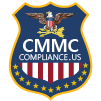Why CUI Protection Matters for DoD Contractors
If your company works with the U.S. Department of Defense or other federal agencies, protecting Controlled Unclassified Information (CUI) is not optional — it’s a compliance requirement.
CUI includes sensitive information that, while not classified, must be protected from unauthorized access. Failure to manage CUI properly can lead to data breaches, failed audits, and even the loss of federal contracts.
This article outlines three critical mistakes organizations make when handling CUI — and how to fix them using best practices aligned with NIST SP 800-171 and CMMC requirements.
Mistake 1: Storing CUI with Non-Sensitive Business Data
Why It’s a Problem
Combining CUI with general project files or business data increases the risk of unintentional access or exposure. It also complicates auditing and incident response.
Example
Saving CUI files in a shared folder labeled “Engineering” or “Projects” without access controls.
Best Practice: Separate and Label All CUI
- Use a dedicated storage location or data enclave for CUI
- Label all CUI files and folders with clear identifiers
- Apply role-based access controls (RBAC) to restrict access
This ensures only authorized users can view or interact with CUI, supporting both security and audit-readiness.
Mistake 2: Lack of Employee Training on CUI Handling
Why It’s a Problem
If employees don’t understand what CUI is or how to manage it securely, they may unintentionally expose sensitive data. Common issues include downloading files to personal devices or clicking on phishing links.
Example
An employee shares a CUI document through an unencrypted personal email account.
Best Practice: Provide Role-Based CUI Training
- Train all employees on how to recognize and handle CUI
- Tailor content by role (e.g., IT, HR, engineering)
- Incorporate real-world examples and secure file handling procedures
Effective training helps reduce user error, one of the most common sources of data breaches.
Mistake 3: Inadequate Access Control for CUI Data
Why It’s a Problem
Without proper access controls, CUI can be viewed, modified, or deleted by individuals who have no business need for it. This increases the likelihood of a data incident and regulatory noncompliance.
Example
All users in a department have access to a shared drive that contains CUI, regardless of their role.
Best Practice: Implement Least Privilege Access
- Restrict access to CUI based on specific job duties
- Regularly review and update access permissions
- Monitor access logs for unauthorized activity
Restricting access improves data security and supports compliance with frameworks like CMMC Level 2.
Summary: Core Steps to Improve Your CUI Compliance
To effectively protect Controlled Unclassified Information and meet government cybersecurity requirements, focus on these three actions:
- Label all CUI consistently and store it separately
- Train staff regularly on their specific responsibilities
- Restrict access to CUI using RBAC and least privilege principles
Implementing these practices can help your organization pass CMMC assessments, prevent security incidents, and maintain eligibility for government contracts.
Need Help Securing Your CUI?
We specialize in helping defense contractors and suppliers build compliant, secure environments for handling Controlled Unclassified Information.
Learn more with us today at cmmccompliance.us/contact-us
- The Brea Networks Cyber Security Compliance Team




